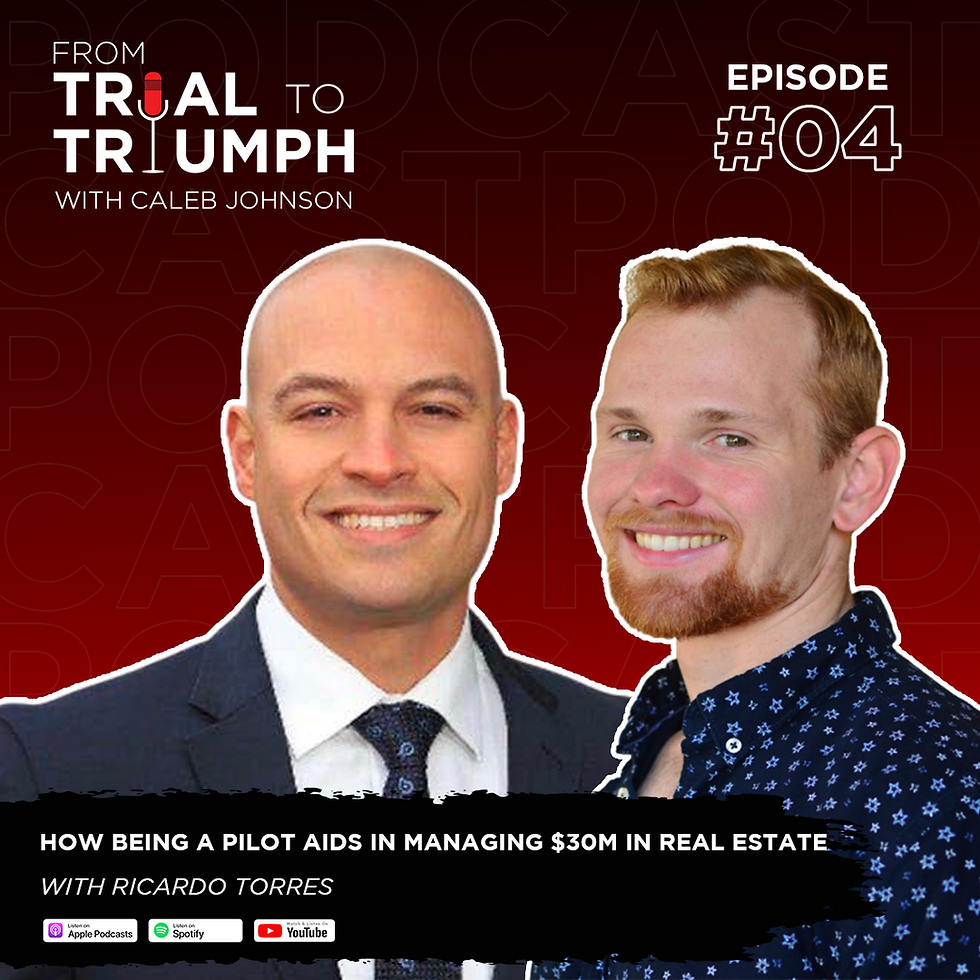Journey from Zero to 14 Units
- Abby Torres

- Aug 9, 2022
- 3 min read

Buy one Single Family Residence (SFR) every year, and after 20 years we'll own 20 houses that cash flow enough for us to retire on... This is how we ended a very serious phone conversation a few years ago, which led to our start in the commercial multi-family investment industry. In the military, most conversations that deal with investments start and end around the subject of Thrift Savings Plan or TSP. The TSP is a tax-deferred retirement savings and investment plan that offers Federal employees the same type of savings and tax benefits that many private corporations offer their employees under 401(k) plans. So, venturing into the real estate world was a new and interesting concept that not only intrigued us, but would allow us to introduce new asset classes into our portfolio. Up until that point, our brokerage accounts and mutual funds were doing well, and we had enough money to buy that single family investment property.

The difference between these two investments is economies of scale.
Challenges:
I don't have $230K so I can't do that. Partner with other, like-minded investors and take it down together, then split the higher profits.
I don't know how to run an apartment complex, and don't have any knowledge on what to do. We didn't either. Devour books, podcasts, surround yourself with people doing the things you want to be doing. Then, as before, partner with a seasoned investor to mitigate risk.
I don't have the credit, nor do I make enough yearly to cover the debt service (mortgage payment) of the apartments. You don't need to. Financing for apartments looks less at your credit, and more at performance of the apartments (Debt Service Coverage Ratio), and whether or not they're profitable.
And.. the best part: While cash flow is definitely higher with larger numbers, unlike SFR, multi-family valuations are based on Net Operating Income (NOI) of the property. In other words, if you can increase the NOI (Gross Income - Operating Expenses), you will exponentially increase the value of the property.

We refinished cabinets, new countertops, all fresh appliances, painted all the walls, replaced several doors, and did a deep clean, to name a few.
The Work Began..
We jumped in head first. When we first bought Jefferson Ave Apartments, the average rent was around $690/month. We knew that if we wanted maximum cash flow, and to increase the value of the property, we were going to need to turn units as they became vacant, and get closer to around $900/month in average rent (other similar apartments in the market were performing at this amount). Doing this during Covid wasn't easy as the cost of products was increasing and the timeline for renovations was severely delayed. Unit #11 was our first turn. The previous tenants left it in shambles, as you can see above, but we were hopeful to get a better tenant in the apartment, and excited for the before and after! This unit was previously being rented for $625/mo. We put $4790 into renovating the unit and were able to increase the rent to $875/mo, and on top of this, we implemented a system called Ratio Utility Billing (RUBS), which allowed us to more closely charge the tenant for accurate electricity and water bills. Overall, we achieved a net $300 increase in cash flow on the day it was leased. We did this several times at Jefferson.

Quick Tip!
When shopping the market for financing options, try local credit unions, and don't be afraid to ask for concessions, or negotiate more advantageous terms. Here are a couple of ways you might be able to save some money, or improve your terms.
Ask for the origination fee to be rolled up into the loan (this might be able to save you 1% of the purchase price in out of pocket costs)
Consider keeping your cash flow remaining at the end of every month in a credit union account. We were able to reduce our interest rate by .25% by keeping our money with them.

How do you fit in to our model?
Generally speaking, there are two methods of investment. The first is as a Limited Partner (LP). This is a passive method of investing that enable us to do all the work, from start to finish on a property, while you sit back and reap the profits. You will be kept apprised on how the asset is performing and know exactly what your money is doing at any given time. The second method is as a Co-General Partner (GP), this method brings you alongside us as we search and underwrite deals, it involves frequent communication with attorneys, tax professionals, brokers and investors to close on a deal, then manage the asset thereafter. Whether you're interested in an LP or a Co-GP deal, we want to hear from you. Click the "Invest With Us" button above and we'll set up a call to learn more about your vision and investment goals.








Comments